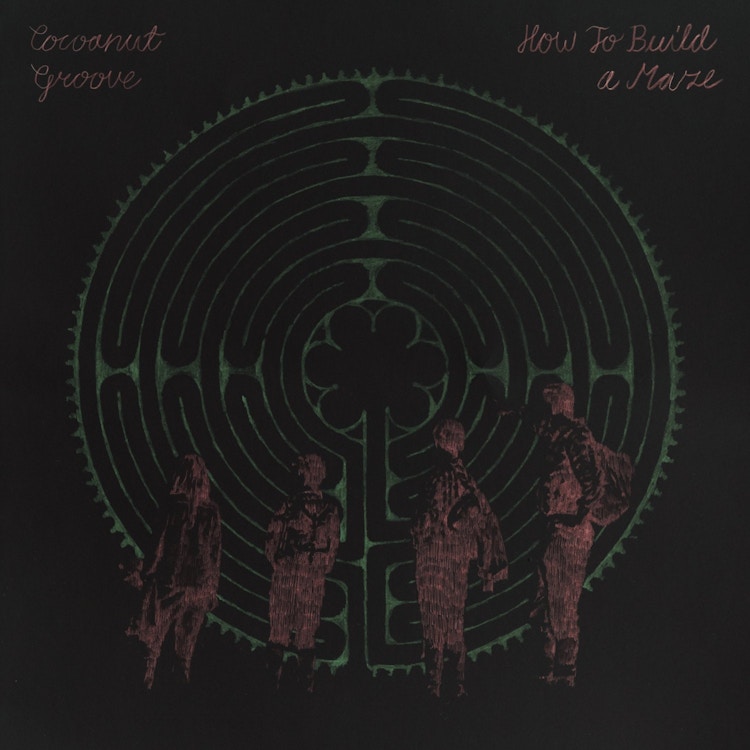"How To Build A Maze"

How To Build A Maze is an album about getting lost, be it physically, geographically, mentally, emotionally…you get the idea. Moreover, its soothing ’60s pop stylings encapsulate not just the process of straying from one’s path, but the mental state of being lost—the insightful pause as you parse together what comes next laced with the quiet appreciation of where you’ve found yourself, regardless of intent.
Ironically, this treatise on wanderlust serves as an important waypoint for Cocoanut Groove, marking their first release with an established lineup. Their first album, 2008′s Madeleine Street, was primarily a solo endeavour from frontman/founder Olov Antonsson, who continues to serve as key songwriter and multi-instrumentalist for the band, but now has the support of a full band for recording and touring.
Recorded in various spots around his hometown of Umeå, Sweden, without the use of any professional recording studios (further fueling the album’s wistless nature), the mix is surprisingly clean, and Antonsson shows a skillful hand in moving various pieces forward or backward to highlight precise pieces of instrumentation within his grand design. He often uses these shifts in instrumentation to further emphasize those feelings of wanderlust, such as with “The High Coast,” where jangly guitar lines audaciously scratch away at the verses only to be superseded by a spastic, Doors-y synth line, pecking at the give and take of anxiety and appreciation.
In many ways, How To Build A Maze is Antonsson acting in homage to his idols. Not only did he pilfer the name Cocoanut Groove from the title of a Lovin’ Spoonful song, but Maze borrows direct influence from Swedish pianist Jan Johansson, sharing some of the traditional folk melodies Johansson used for his 1964 avant-folk/-jazz album Jazz på svenska. Antonsson even takes a moment to include a tributary name-drop of The Zombies within “Night Walk” (“We count the stars just like in a song by The Zombies,” referring to “Beechwood Park” from their ’67 album Odessey and Oracle)—a soft-hearted, acoustic ballad which features twice on the album. Yet the clear divining rod for How To Build A Maze is Antonsson’s appreciation of the intermingling of pop, folk and rock prevalent in the late ’60s/early ’70s. Many of Maze‘s compositions lean on styles pioneered by now iconic acts like The Byrds, Donovan and Nick Drake.
The tide of How To Build A Maze ebbs and flows between airy folk and more haunting rock, but at all times keeps a relaxed aura in tow. Even its sharper-edged tracks—such as the relatively quick-paced “Colours” (which plays like an iteration of some of the early, jauntier numbers by Belle And Sebastian) and the scattered guitars-vs.-synth duality of “The High Coast”—maintain a flow that’s altogether soothing. How To Build A Maze plays out like a whisper from one’s own meandering inner monologue, a quiet reminder to live not for the destination, but for the journey itself.
- Robby Ritacco
Get the Best Fit take on the week in music direct to your inbox every Friday

Prima Queen
The Prize

Femi Kuti
Journey Through Life

Sunflower Bean
Mortal Primetime





